Ambiguous or reversible figures 7
since July 24, 2014
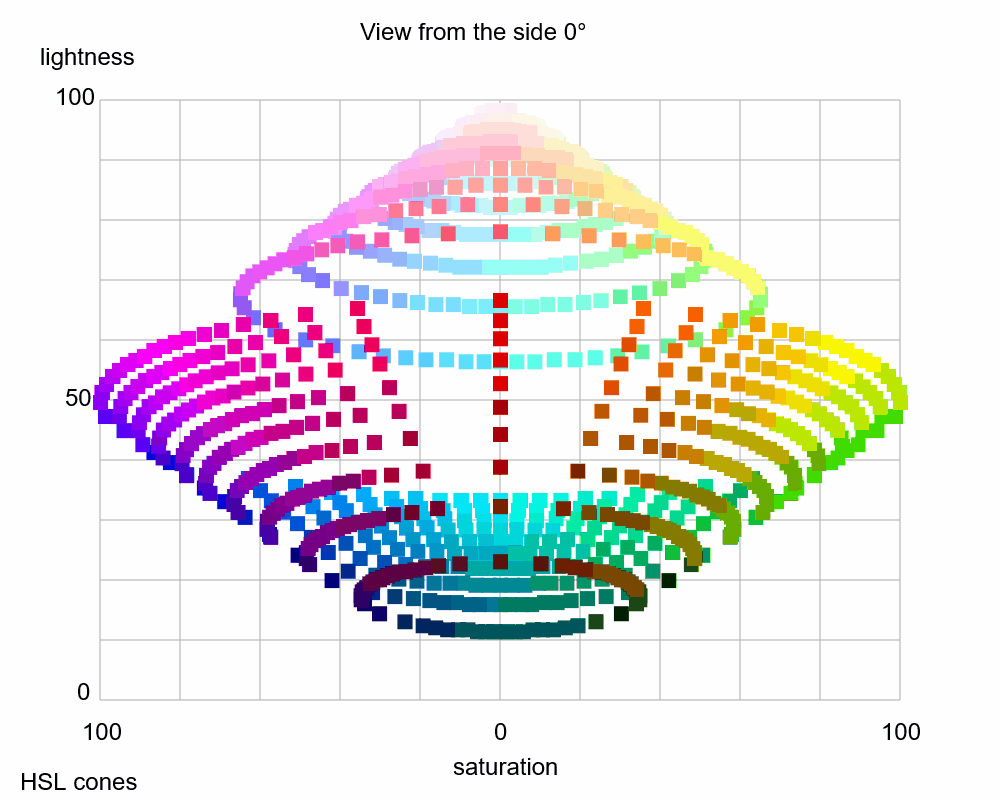
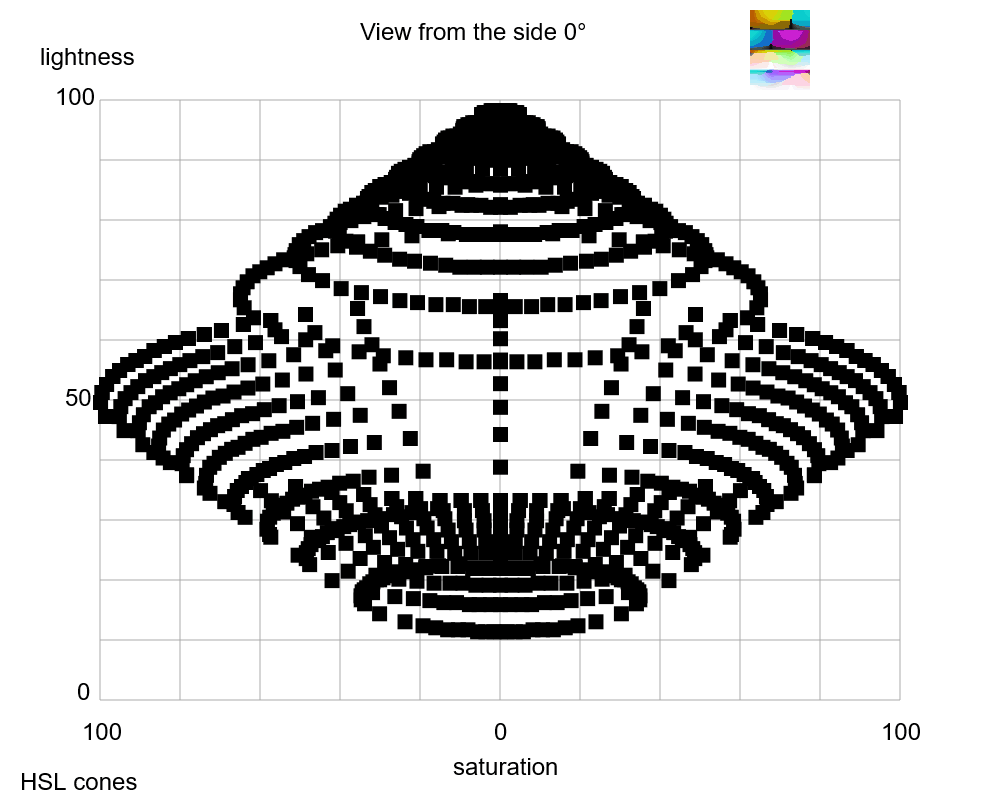
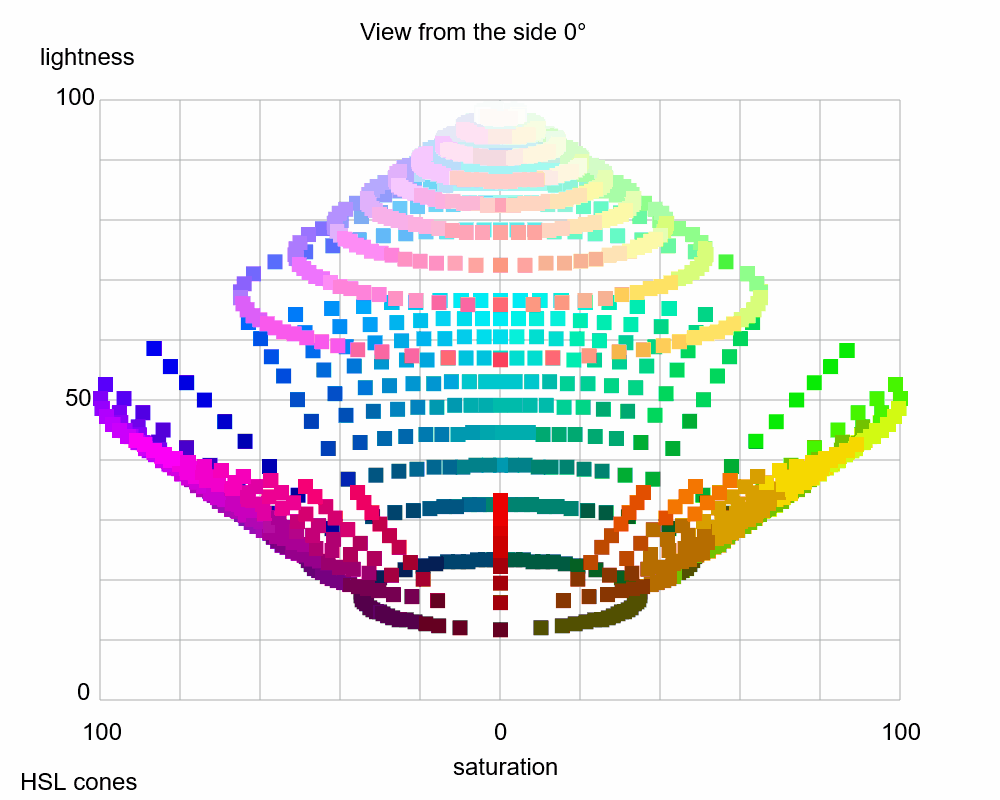
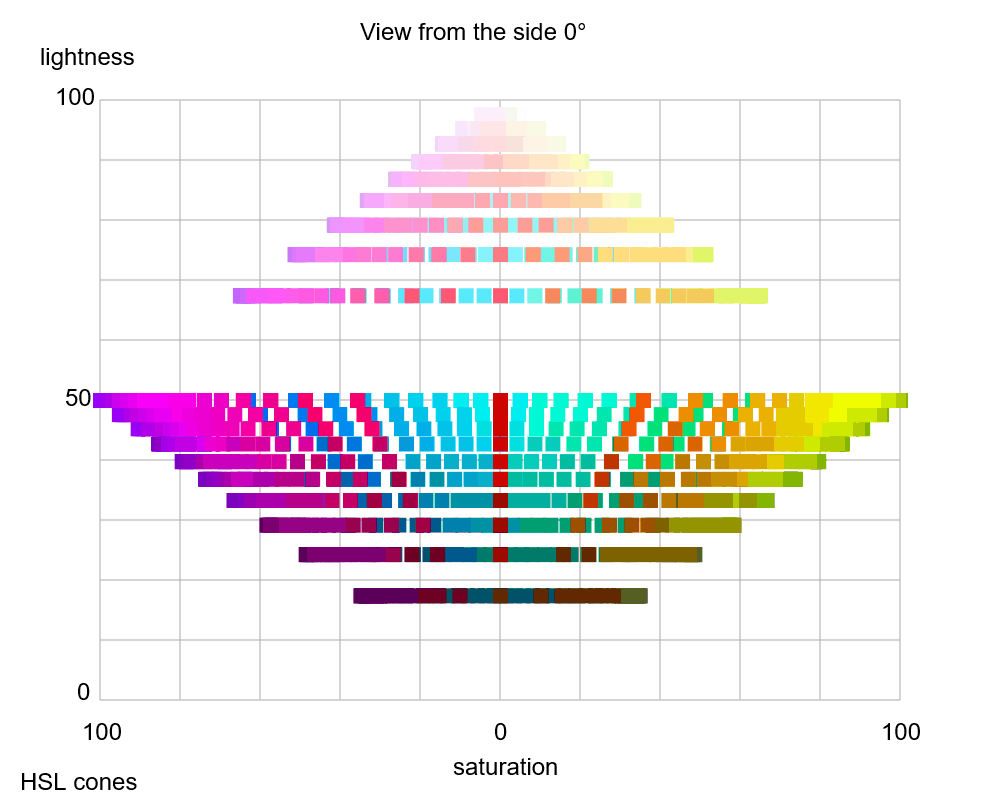
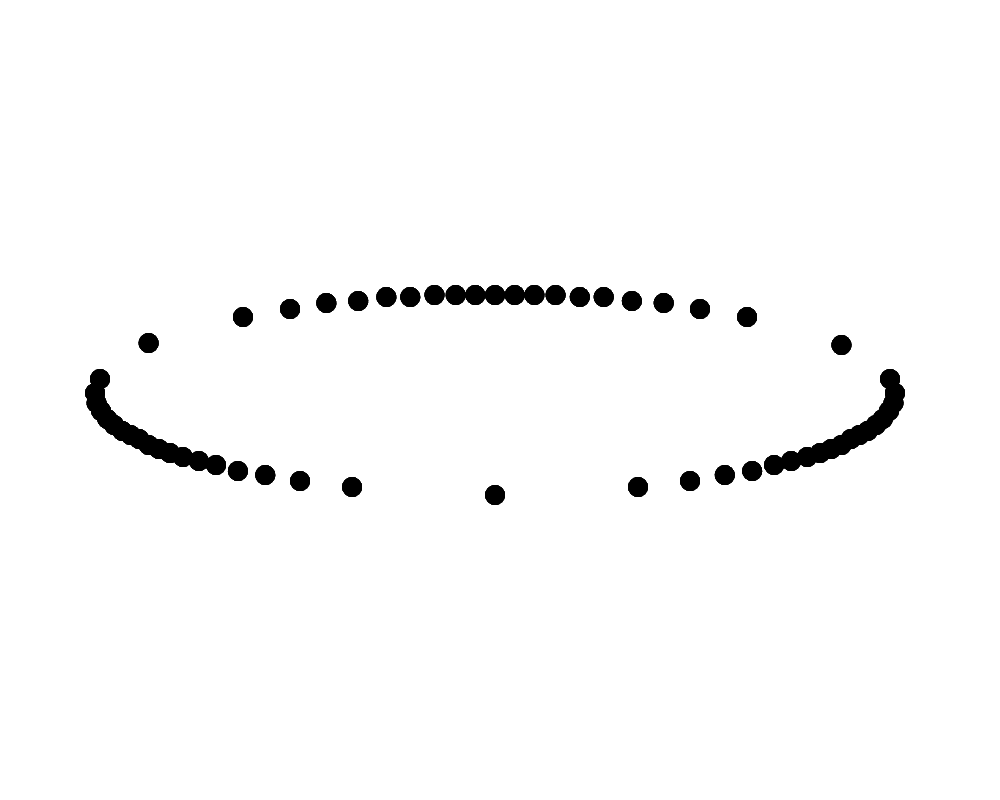
Copyright Akiyoshi Kitaoka 2023 (July 12)
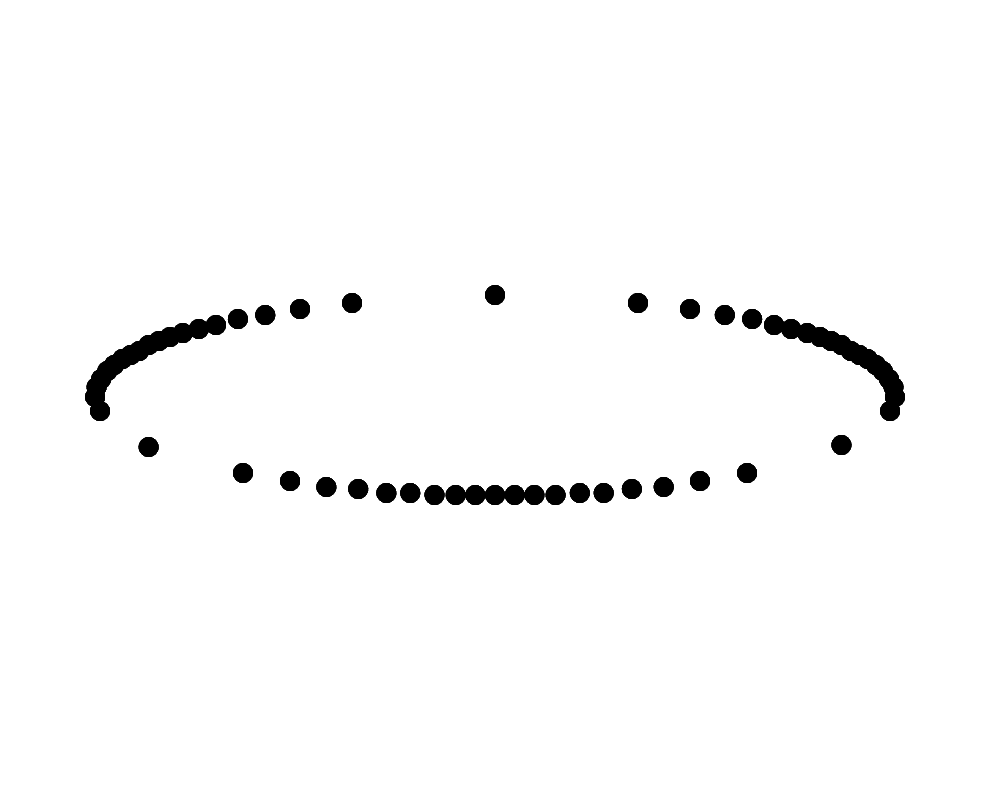
Copyright Akiyoshi Kitaoka 2023 (July 12)
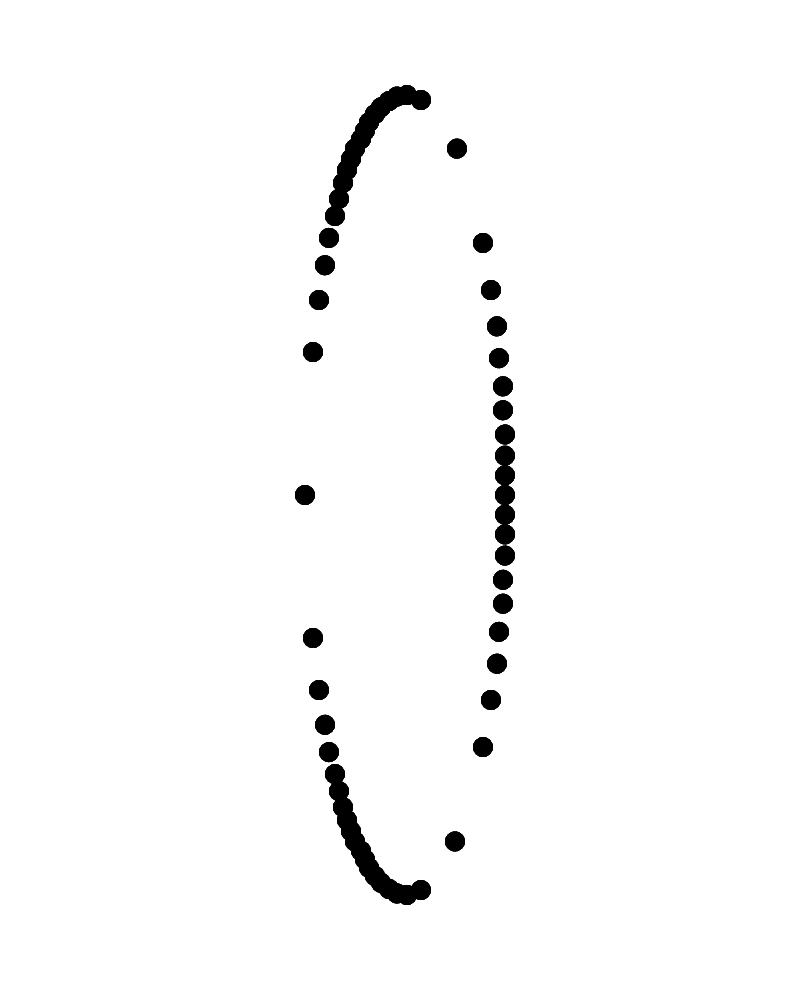
Copyright Akiyoshi Kitaoka 2023 (July 13)
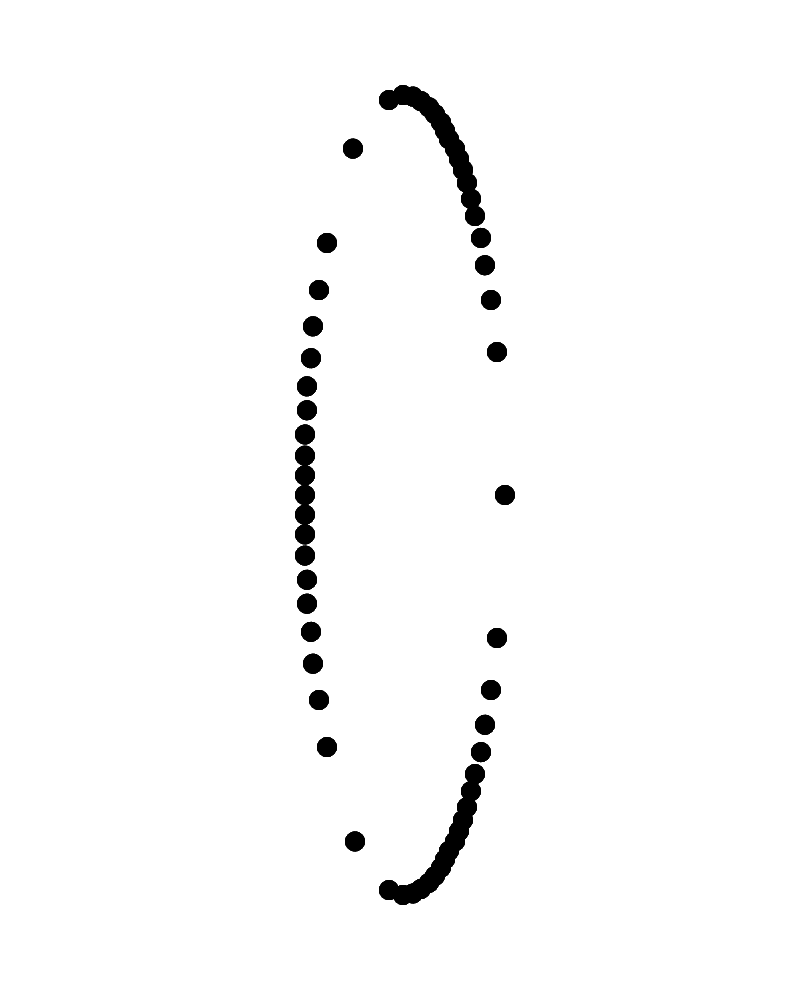
Copyright Akiyoshi Kitaoka 2023 (July 13)
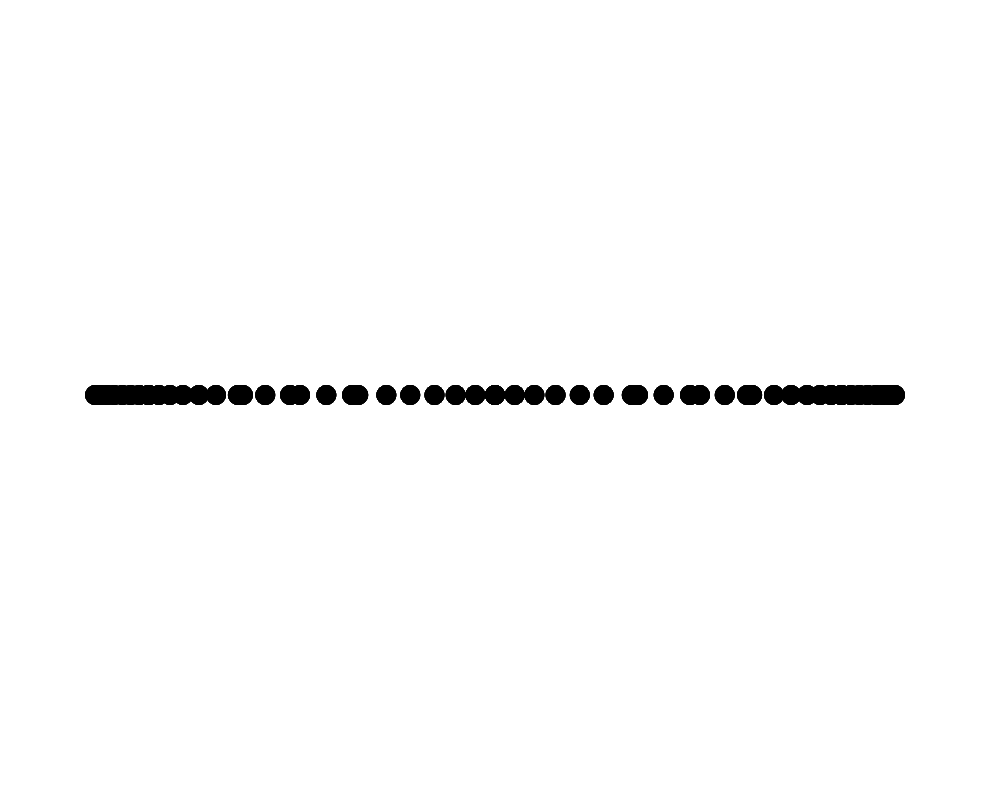
上から見下ろして時計回りに回転して見えるリングに見えるか、下から見上げて時計回りに回転して見えるリングに見える。
Copyright Akiyoshi Kitaoka 2023 (August 18)
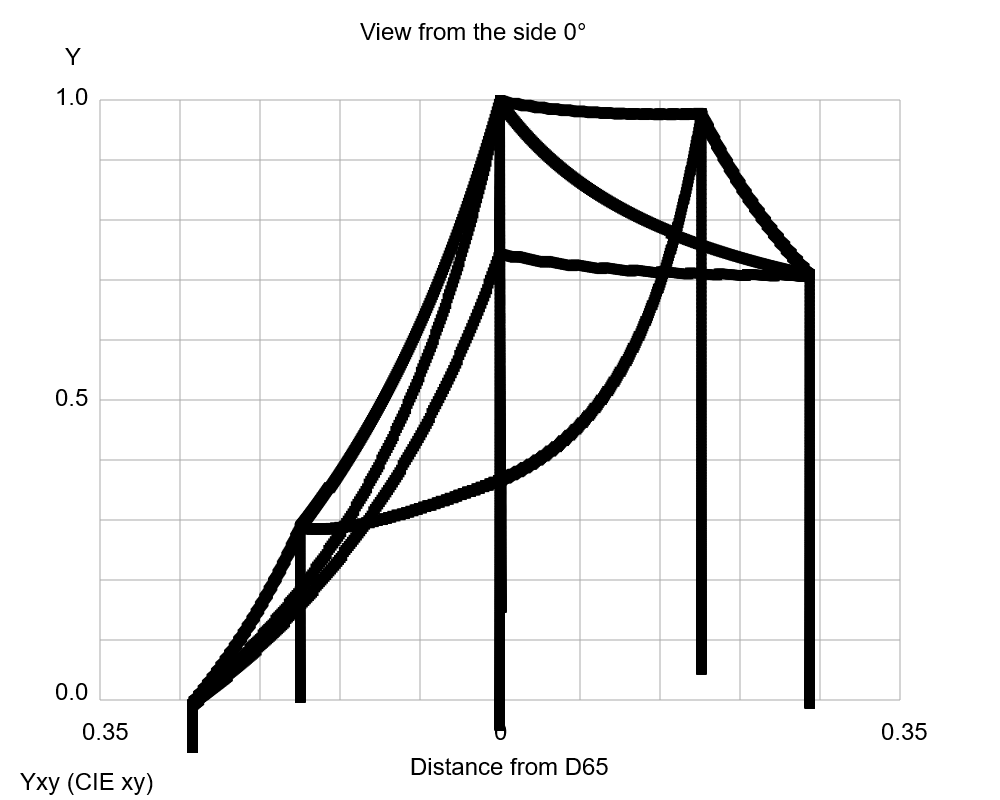
Which is predominant?
— Akiyoshi Kitaoka (@AkiyoshiKitaoka) July 5, 2023
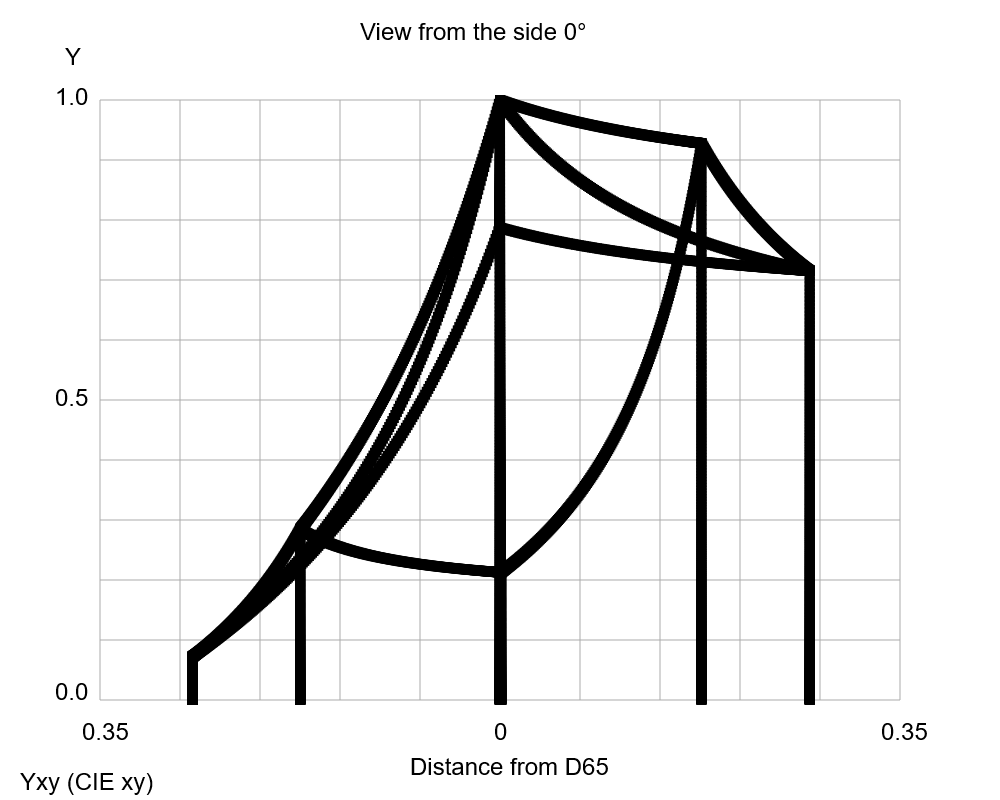
For me, the clockwise rotation is predominant. I guess it's a 50-50 split, but is it correct? Could you vote which is predominant for you?
— Akiyoshi Kitaoka (@AkiyoshiKitaoka) July 7, 2023
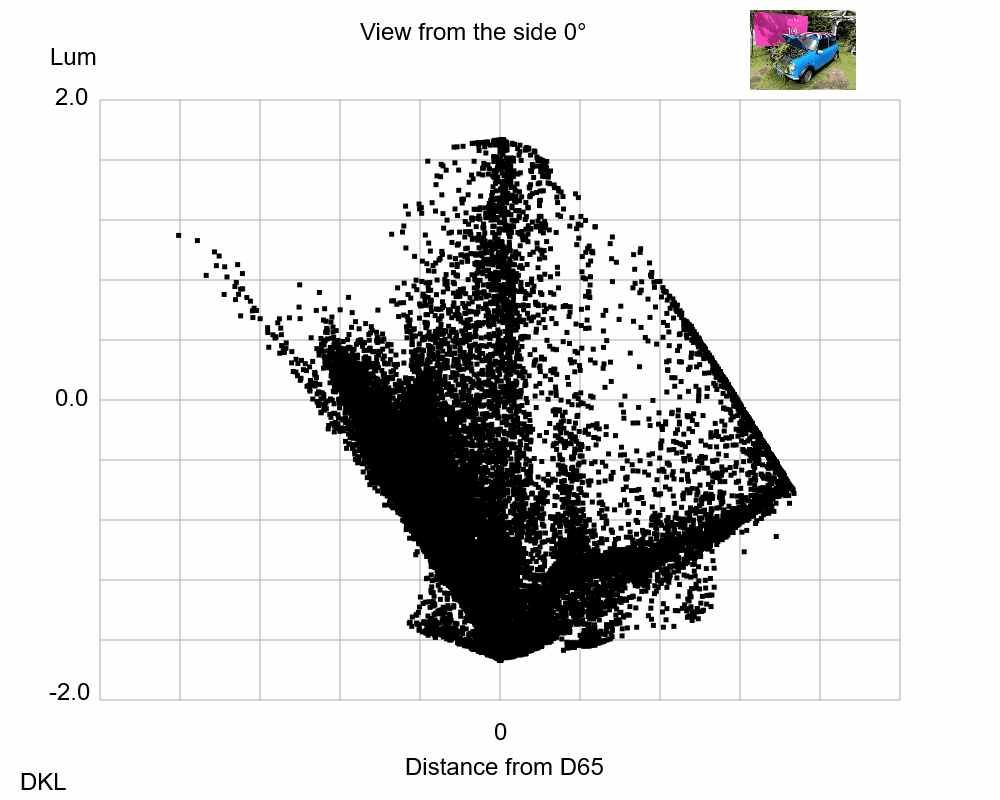
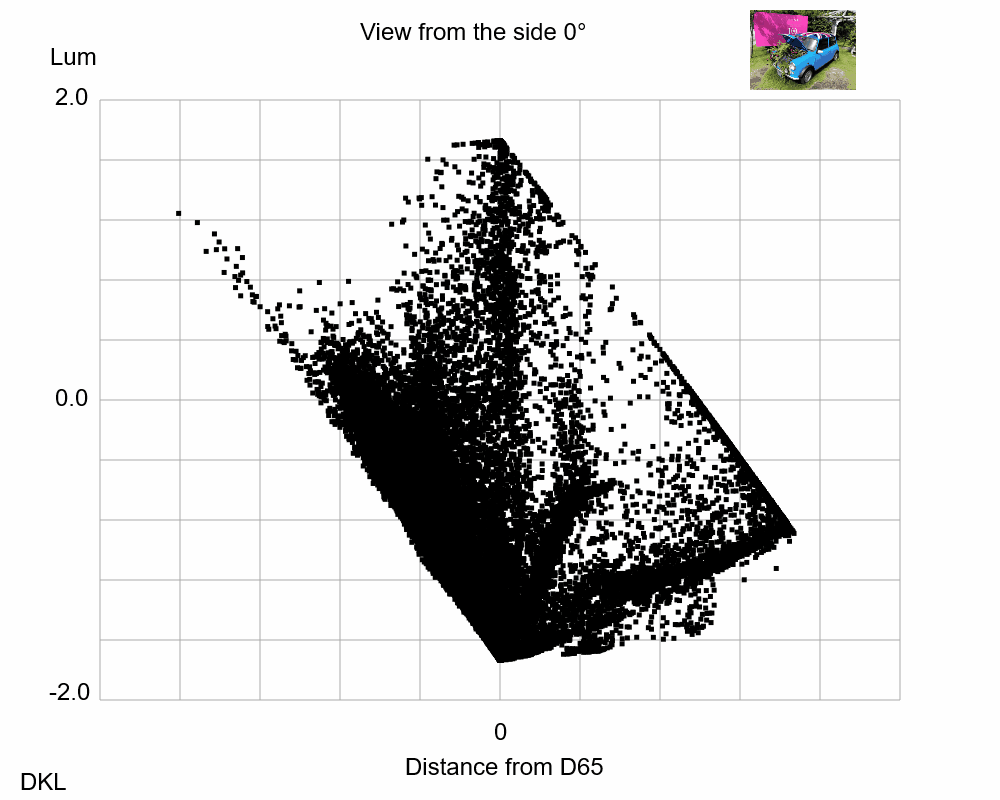
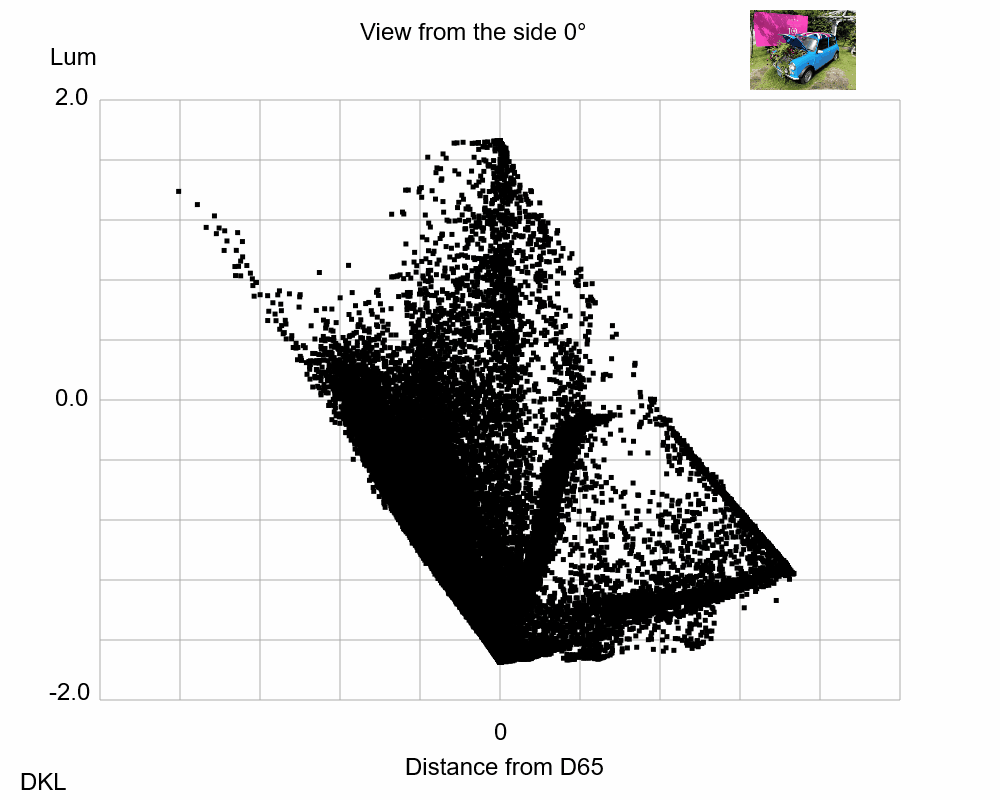
Copyright Akiyoshi Kitaoka 2023 (July 7)
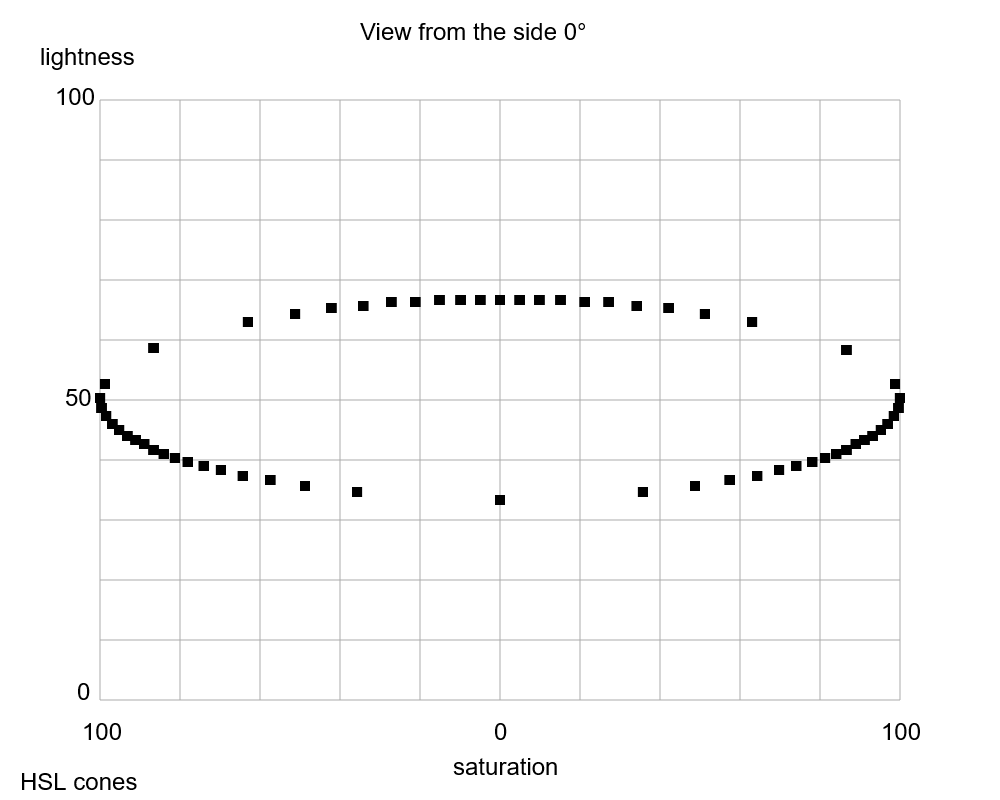
Copyright Akiyoshi Kitaoka 2023 (July 7)
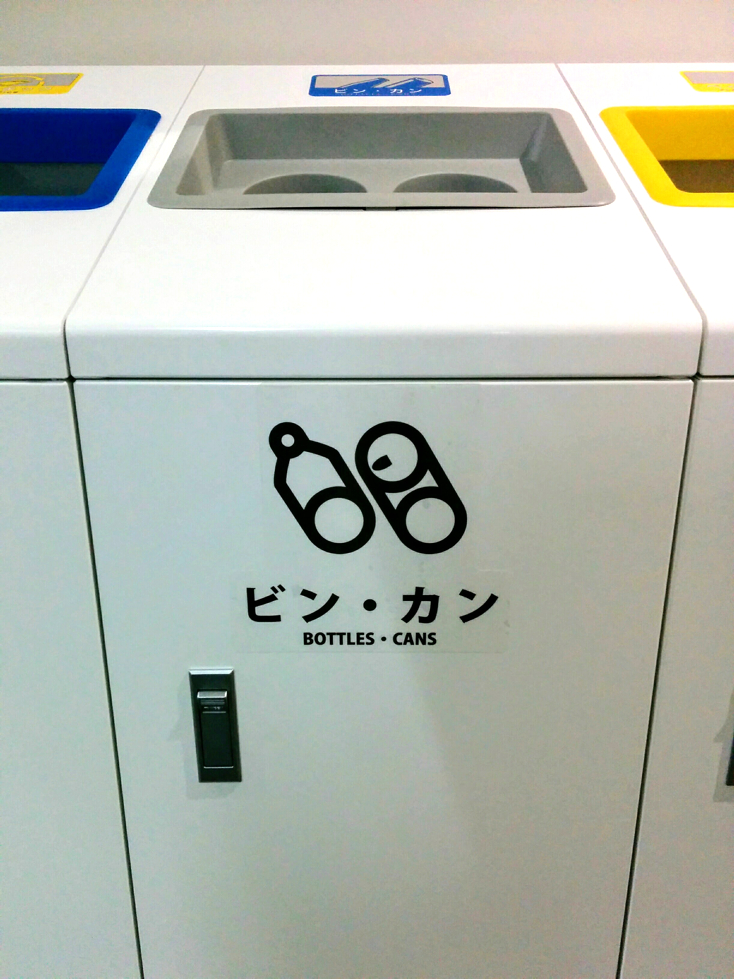
"Depth reversals of bottle and can"
The images of a bottle and a can appear to reverse in depth.
Copyright Akiyoshi Kitaoka 2017 (March 10)
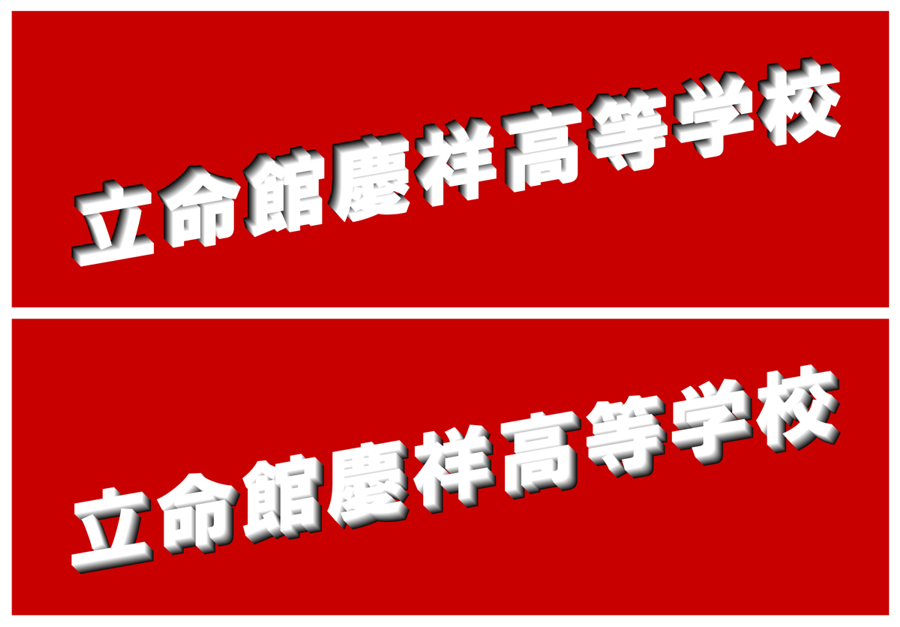
"Bistable words Ritsumeikan Keisho-kotogakko"
The white words in the upper block is of the same shape and at the same position as those in the lower block, but their orientations in depth appear to be different from each other. In the former, the normal vector of the words appears to head downward, whereas in the latter that appears to point upward.
Copyright Akiyoshi Kitaoka 2014 (September 26)
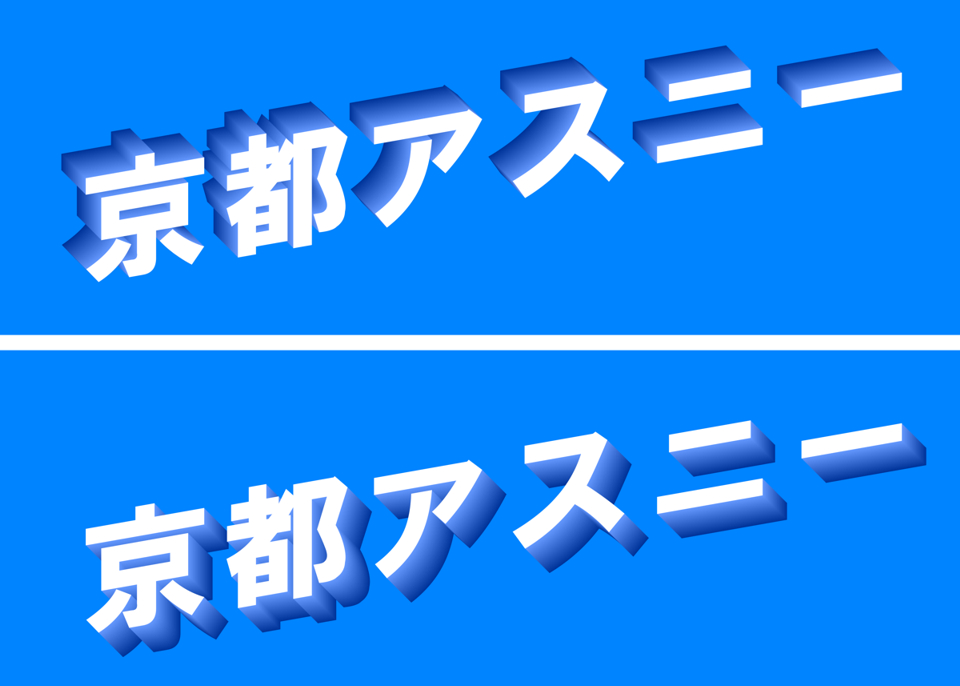
"Bistable words Kyoto Asunii"
The white words in the upper block is of the same shape and at the same position as those in the lower block, but their orientations in depth appear to be different from each other. In the former, the normal vector of the words appears to head downward, whereas in the latter that appears to point upward.
Copyright Akiyoshi Kitaoka 2014 (September 17)
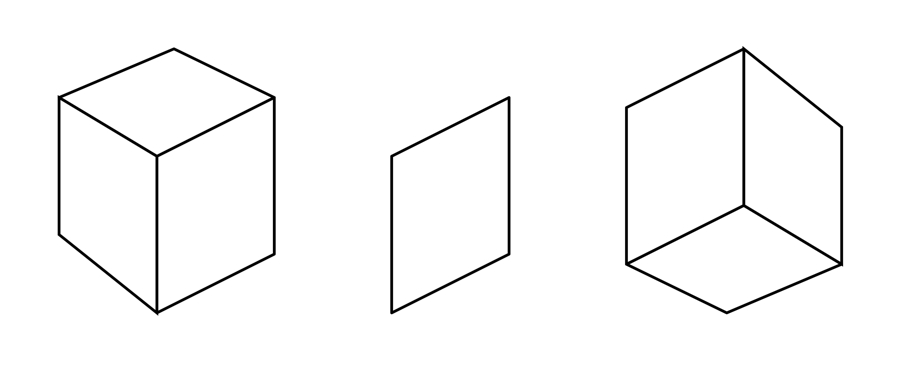
"Parallelogram as an ambiguous depth cue"
Copyright Akiyoshi Kitaoka 2014 (September 17)
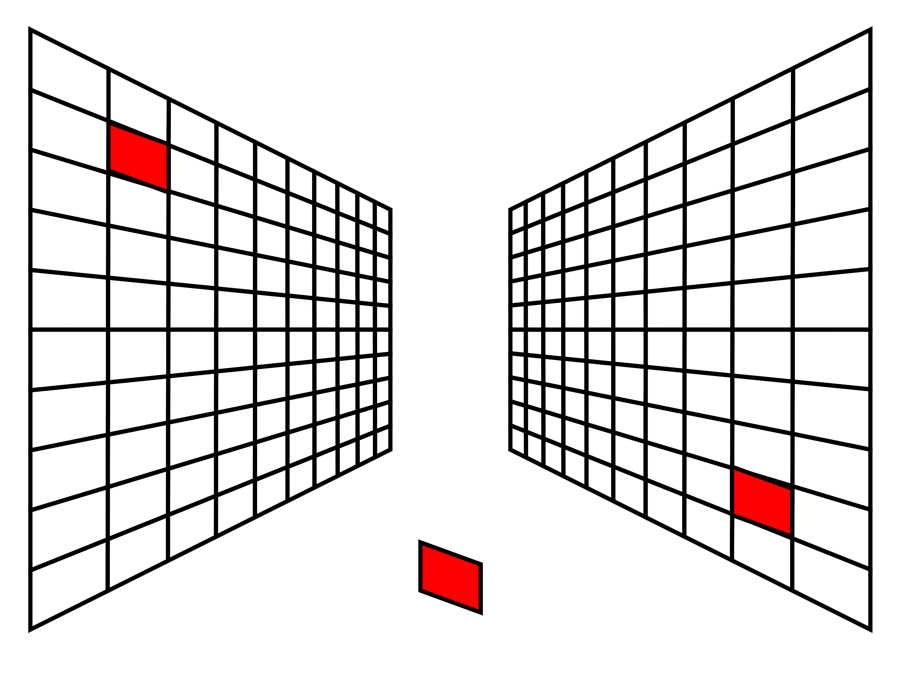
"Two possible locations of a parallelogram"
Copyright Akiyoshi Kitaoka 2014 (September 18)
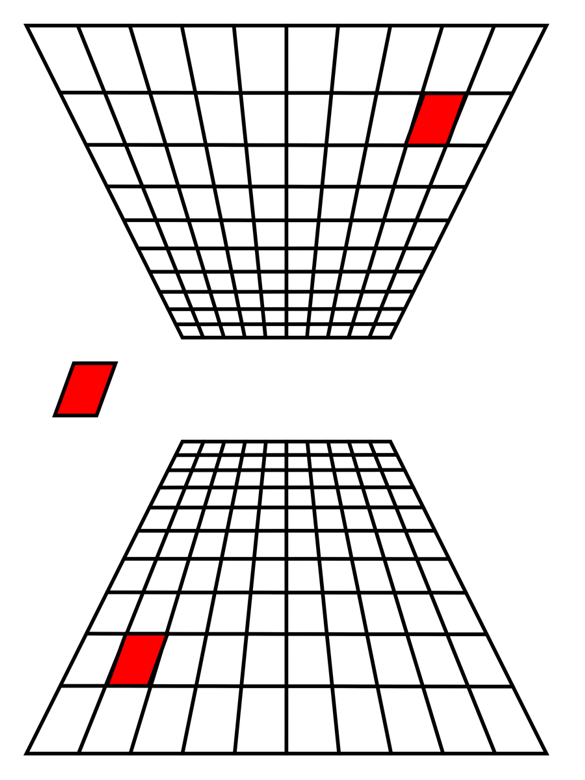
"Two possible locations of another parallelogram"
Copyright Akiyoshi Kitaoka 2014 (September 18)
Examples of shape constancy
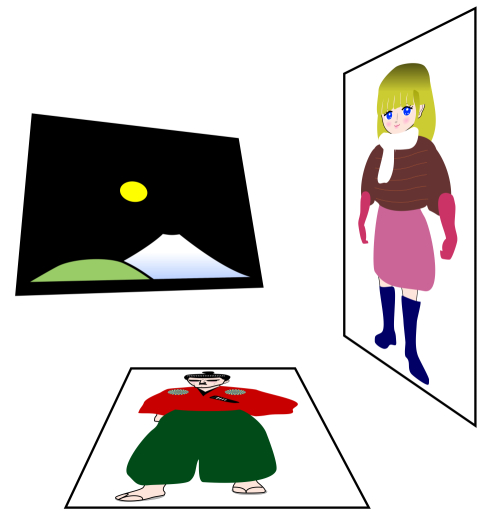
Akiyoshi Kitaoka (Ed.) (2011) Psychology of Perception. Kyoto: Minerva-shobo. Figures
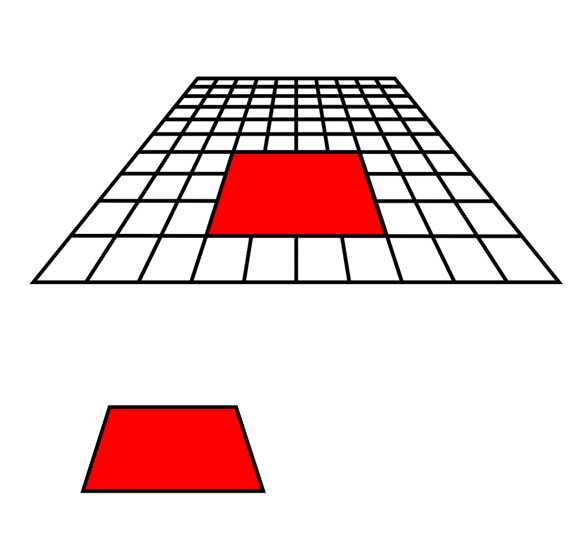
"The possible location of a trapezoid"
Copyright Akiyoshi Kitaoka 2014 (September 18)
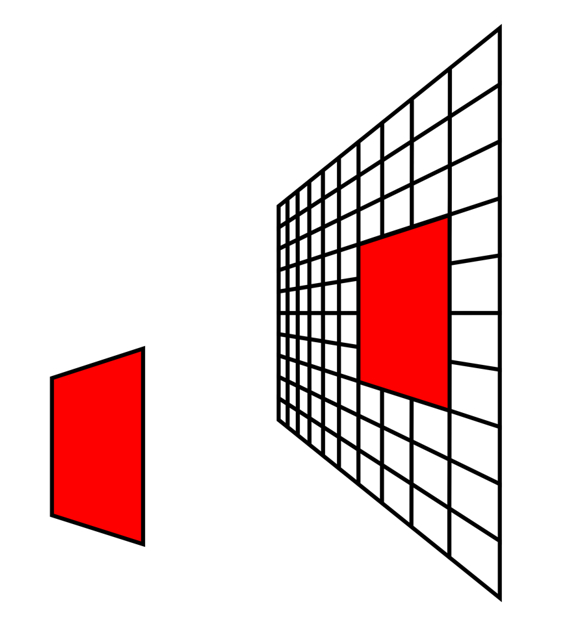
"The possible location of another trapezoid"
Copyright Akiyoshi Kitaoka 2014 (September 18)
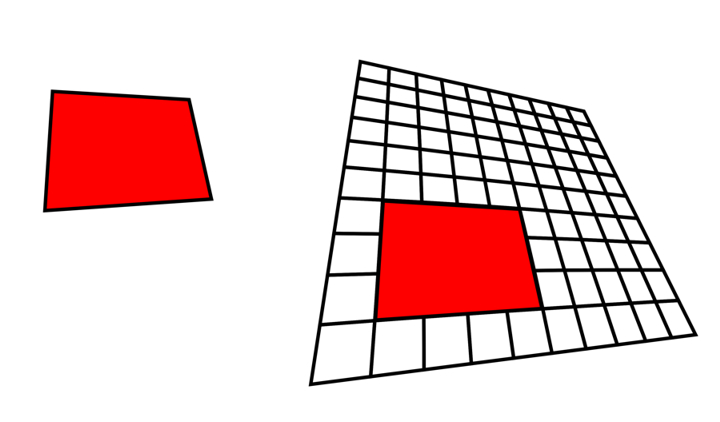
"The possible location of a quardrangle"
Copyright Akiyoshi Kitaoka 2014 (September 18)
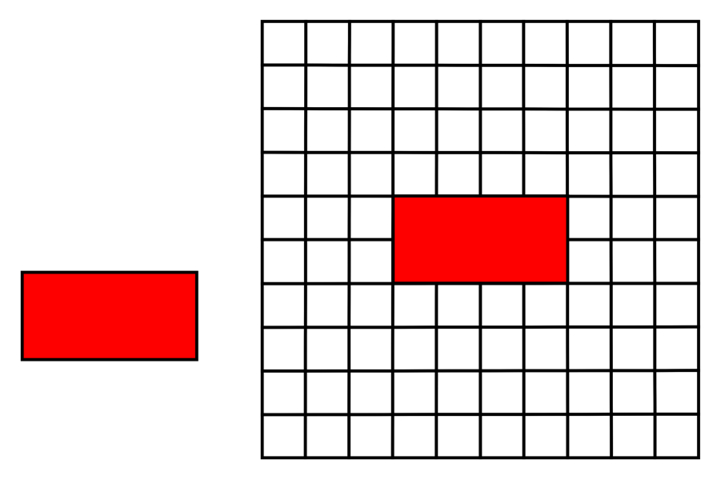
"The possible location of a rectanle"
i.e. in a frontoparallel plane!
Copyright Akiyoshi Kitaoka 2014 (September 18)
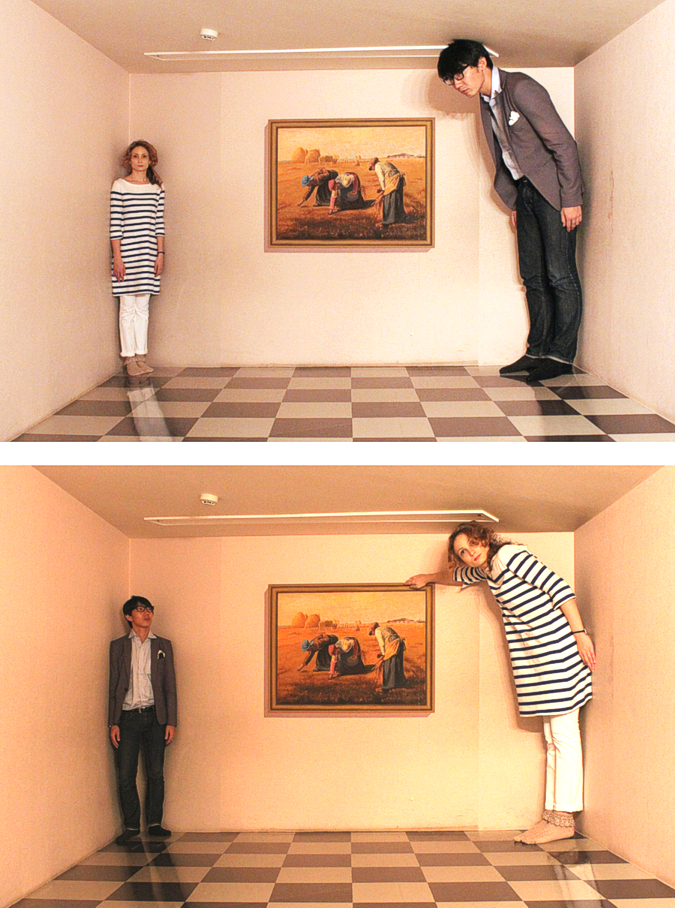
 Ames window |
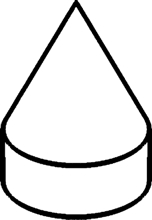
"Cake and rocket"
after Fig. 4.2 of Barrow and Tenenbaum (1981)
reproduced by Tadamasa Sawada
Barrow, H. G. and Tenenbaum, J. M. (1981). Interpreting line drawings as three-dimensional surfaces. Artificial Intelligence, 17, 75–116. (p. 86, FIG. 4. 2.)
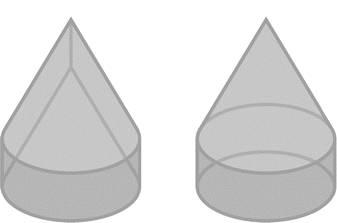
"Viewed from above and below in Cake and rocket"
after Figure 2 of Tsuruhara, Sawada, Kanazawa, Yamaguchi, Corrow and Yonas (2010)
reproduced by Tadamasa Sawada
Tsuruhara, A., Sawada, T., Kanazawa, S., Yamaguchi, M.K., Corrow, S., and Yonas, A. (2010). The development of the ability of infants to utilize static cues to create and access representations of object shape. Journal of Vision, 10(12), article 2; http://www.journalofvision.org/content/10/12/2 doi: 10.1167/10.12.2 (p.3, the lower part of Figure 2)
with permission on July 24, 2014
Ambiguous or reversible figures 6
Ambiguous or reversible figures 5
Ambiguous or reversible figures 4
Ambiguous or reversible figures 3
Ambiguous or reversible figures 2
Ambiguous or reversible figures